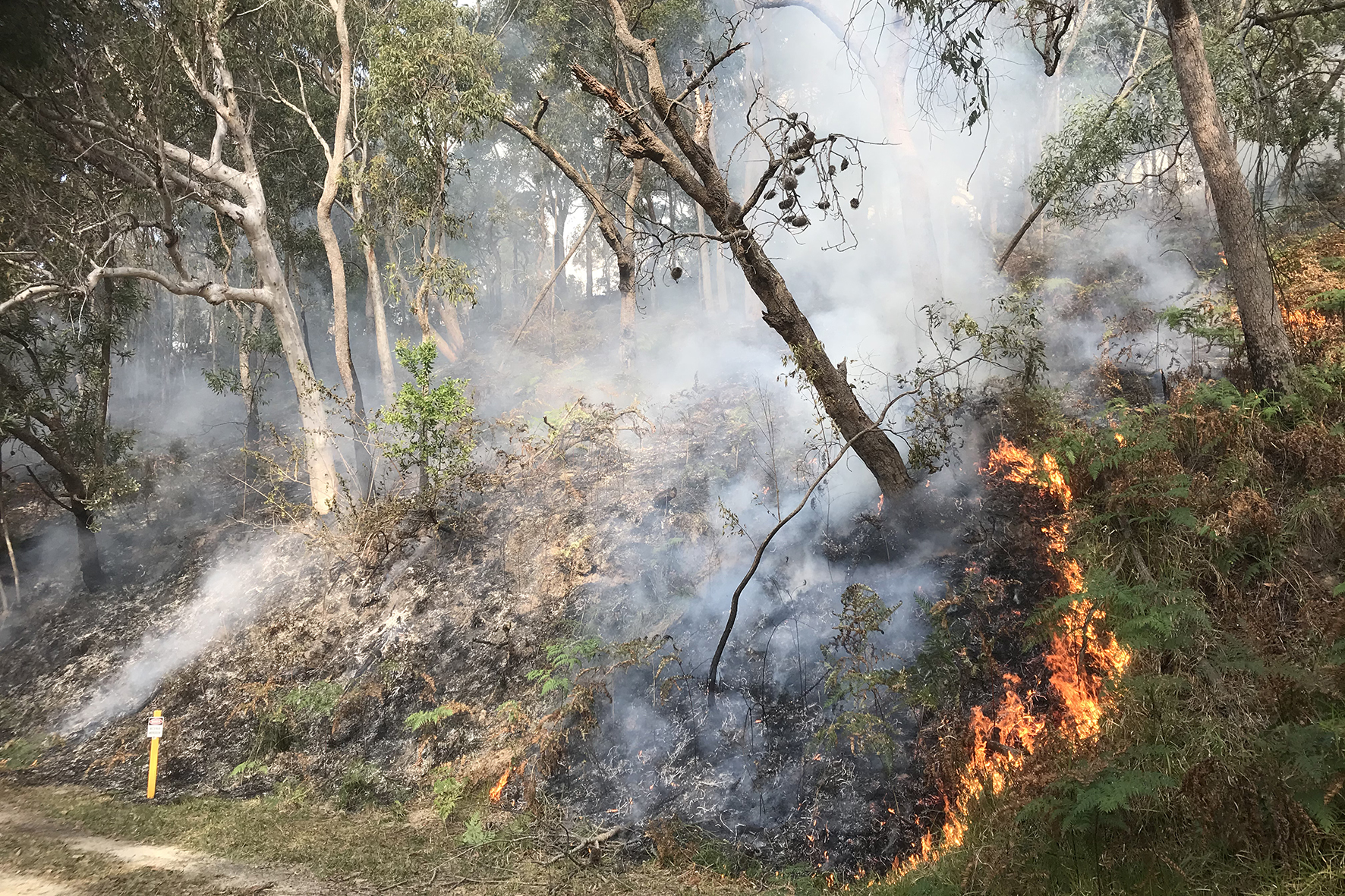Research into koala numbers before and after cultural burns on the world’s second largest sand island has fuelled a push to merge Aboriginal knowledge with cutting-edge science to mitigate the dangers of bushfires across Australia.
University of the Sunshine Coast researchers and Quandamooka land custodians have hailed the success of the two-year collaboration on Minjerribah/North Stradbroke Island.
Located off southeast Queensland, the 275 square kilometre island has a wide range of protected flora and fauna.
Quandamooka Yoolooburrabee Aboriginal Corporation (QYAC) Ranger Bruce Walker said cultural burns were cooler, lower and slower than “hot fires”, enabling better coordination and control to encourage the regeneration of suitable native plants.
Mr Walker said the burns also controlled species like banksias and wattle to reduce the risk of fire reaching the canopy where koalas lived.
The results of the UniSC-led study showed no negative impacts on the densities or stress levels of the genetically unique koalas after the first burn in July 2021, across 130 hectares of the island’s northeast between Flinders Beach and the East Coast Road.
Instead, the study indicated the strength of koala numbers in that area and the effectiveness of cultural burning in reducing fuel load from vegetation while keeping tree canopy intact, and koalas safe from injury or distress.
Environmental scientist Asitha Samarawickrama, a former consultant and wildlife guide from Victoria who conducted the research for his UniSC Master of Science, said the findings were exciting.
“It is believed to be the first study of Aboriginal cultural burning to mitigate the risk of wildfires on koalas, something that is increasingly important as uncontrolled wildfires become more frequent and severe with climate change,” Mr Samarawickrama said.
“It showcases how cultural practices over millennia can be combined with cutting edge technology to advance science and support traditional management for conservation purposes.”
Supervised by Dr Romane Cristescu, the UniSC team counted and monitored koalas using drones fitted with thermal cameras and collected koala scats from the ground to analyse hormone metabolite levels which could indicate stress. The team also collected multispectral and Lidar (laser) data.
“Minjerribah’s koalas are special and worth protecting,” said Dr Cristescu. “They are genetically distinct and very healthy, with little evidence of diseases such as chlamydia, in contrast to mainland koalas.
“After Australia’s 2019-20 megafires showed the vulnerability of koalas living in fire-prone habitat, an obvious solution was to address the ways we manage fires to try to prevent them. This study is a first step to show that cultural burns have that potential."
QYAC used UniSC drone surveying and koala data when planning the second burn in August 2022, which was successfully conducted with partner organisations, helicopters and veterinarians on standby.
Outcomes of the ongoing research have been welcomed by funding supporters WWF-Australia and the Queensland Department of Environment and Science.
WWF-Australia landscape protection project manager Tanya Pritchard said it was fantastic to be part of research that could help ensure the safety and recovery of the east coast’s endangered koalas into the future.
“We supported this project through our Regenerate Australia program, which is about making landscapes more resilient to the effects of climate change,” Ms Pritchard said.
Media enquiries: Please contact the Media Team media@usc.edu.au

